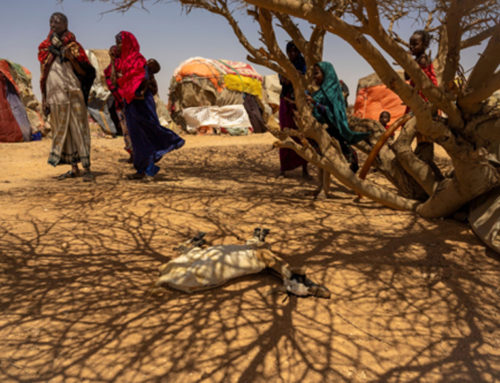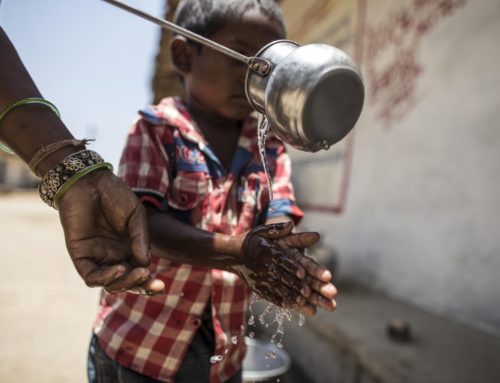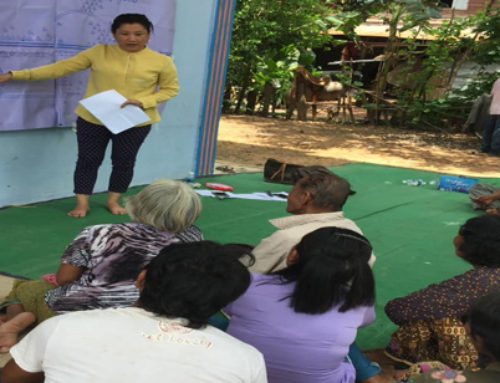India’s state of health care has been a much-discussed topic over the past few weeks owing to tragic medical emergencies like that of the unfortunate deaths of over 150 children in Muzaffarpur, Bihar triggered by malnourishment or the recent nation-wide protests over the alleged assault on a doctor in West Bengal by a patient’s family. These incidents have thrown light on the importance of bringing in a massive overhaul in the current health care system especially in rural India. The negative impacts of poor sanitation on human health has been proven beyond doubt. Coupled with a lack of access to safe sanitation facilities and shortages of health care workers, rural India faces a major hurdle.
In the last two decades, rural India’s healthcare system has witnessed increasing chronic shortages of medical professionals, from doctors and paramedics to lab technicians and surgeons. The decline in access to medical professionals is detrimental to the Indian rural healthcare system, as the quality and availability of care for rural communities significantly worsens. To add to this, India has the highest overall burden of disease globally, making reform of the healthcare system more urgent than it already is.1 Improving the quality of medical care in rural communities, therefore, is a priority for policy makers, donors, development workers, and international agencies.
Within the health budget of India, a large proportion is spent on curative services, while staff salaries comprise the majority of public health expenditure. If salaries are used inefficiently because of poor motivation and performance of staff, this may mean that a large share of the overall health budget is wasted. While the number of health facilities in rural India has increased, many studies point to a major source of wastage of health-sector resources, namely the excessive of medical providers and professionals. This significantly weakens the relationship between health spending and positive health outcomes. For instance, as of March 31st 2015, more than 8% of 25 300 primary health centres in India had no doctor, 38% had no laboratory technician, and 22% had no pharmacist.2
India’s rural health system is structured around a tiered system of care. The first tier comprises a system of sub-centres, which are manned by trained health workers and auxiliary nurse midwives and cater to 3000-5000 people per centre. Primary health centres (PHC) comprise the second tier of care and act as the first point of contact between rural communities and medical officers. They cater to about 30,000 people per centre and are supposed to have a doctor supported by fourteen paramedic staff. PHCs are also referral units for smaller sub-centres. Community health centres (CHC), the third tier of care, are meant to have four medical specialists supported by 21 paramedic staff and cater to about 120,000 people per centre.
It is essential then, to understand why this problem persists at a systems level, what the structural and administrative flaws in the system are, and how the skills gap and lack of resources can be remedied through training, increased health spending, policy reform, data and information sharing, and a better medical education framework.
Why the rampant absenteeism of healthcare providers?
While the above network of facilities looks impressive, the nationwide average absentee rate for doctors and other healthcare providers is around 40% and only 20% of those seeking outpatient services and 45% of those seeking indoor treatment are able to access public health services.3 Employees of such facilities are usually paid by the state, while local officials have no authority over them. Further, many medical officers visit the PHCs infrequently and run parallel private practices in nearby towns. Many are frequently unavailable for childbirths even if the mother is willing to come to a PHC. Though PHCs are supposed to be free, most of them charge an informal fee. Thus, many poverty-stricken rural communities choose to favour private practices.
While India has one of the largest medical education systems in the world, many educated and ‘city-bred’ doctors are not willing to serve in rural areas, many of which are still difficult to access and lack electricity. While the Indian medical education system produces some of the finest doctors and health professionals in the world, it still trains doctors to primarily work in tertiary care centres, specialized hospitals, or hospital in high-income areas.4 Working in the public sector is thus often seen as a humiliating and demoralizing experience as their professional lives lack occupational development opportunities, accountability, and access to basic medical resources to fulfil their roles as healthcare providers. As a result, there is gross neglect for primary health and family care within the professional development of doctors in India.
The dilapidated state of medical infrastructure and equipment, as well as the poor supply of medical equipment and drugs, is also to blame. While vastly increased expenditure in medical infrastructure and facilities is needed, it is unlikely to have a meaningful impact without a concomitant reform in rural health policy and administration.
Lack of Training, Motivation, and Accountability
The quality of health care services in rural India matters because it reflects the extent to which investments in its national health care systems are able to raise both human capital and individual welfare. Chronic absenteeism leads to low usage, because health care personnel are not available, and dissuades future use because of unreliable service.
Many rural medical practitioners, who provide 80% of outpatient care, have no formal qualifications for it.5 This is an alarming statistic for many communities who rely on their practitioners to provide safe and effective treatment. The absence of large-scale training measures to address skill gaps and staff shortages for nurses, doctors, paramedics, and support staff have also severely blunted the ability of India’s rural healthcare system to deliver timely and effective care to rural communities.
There is also little to no oversight or accountability for medical providers owing to the fact that, as mentioned before, payrolls are administered by the federal government. Monetary incentives are usually weak, which leads to healthcare employees taking unsanctioned absences of leave. According to Shrawan Nigam, a senior consultant at the Indian Council for Research on International Economic Relations, rural health workers have a tendency passing on the responsibility to the Panchayati Raj, the local council.6 The need for monitoring and accountability is therefore urgent.
What can be done?
The quality of health care services in rural India matters because it reflects the extent to which investments in national health care systems are able to raise both human capital and individual welfare. Efficient and accountable health care systems provide good returns on such investments. Moreover, in the long term, the quality of health care matters more to improving health outcomes than increases in health care spending.
It is abundantly clear then, that a variety of shortcomings play into the inefficacy of India’s rural public health infrastructure, policies, and management. These shortcomings require rapid remedy on the part of the central government, but also on state governments, NGOs, and the private sector.
The Global Monitoring Report 2008 published jointly by the World Bank and the IMF emphasize that increased spending on education and health programs alone is not the answer and that the quality and equity of spending are equally important.7 In this context, improved governance, more robust accountability mechanisms, and effective expenditure management are required to raise the quality of education and health services and improve health access of poor, underserved populations. Moreover, problems of physical accessibility and transportation for rural communities are also a major barrier to medical care, and so efforts to ensure greater accessibility by improving road or transport options to sub-centres, PHCs, or CHCs must be taken.
It must be recognized that, at least in the near and mid-term, the Indian government is of limited capacity in delivering health services. It should, therefore, devise a shift in strategy that allows for rural communities to choose between public and private providers. In this context, providing the poor with cash transfers for out-patient care and insurance for in-patient care would be a worthy preliminary step. Next, a competitive price for services provided at public facilities could be established in order to increase revenues and therefore the quality of care. The state should invest in public facilities only in difficult to access regions where private providers may not wish to do business.
Increased depth and breadth of training must also be instituted across the board, from doctors to support staff. In line with the National Health Policy Act 2002, the federal government could introduce one-year long training courses for practitioners engaged in treating routine illnesses, which would not only better equip paramedics and nurse practitioners to handle an increased number of illnesses and conditions, but also close the skill gap of myriad health practitioners nationally to provide better primary care.8
It would also be highly beneficial for all stakeholders if either state or central governments introduced workforce policies in which doctors are rotated between rural and non-rural postings, which would address workplace dissatisfaction and motivation between young doctors. In the last few decades, several state governments have experimented with various measures to increase the number of doctors posted in rural areas. These include mandatory rural postings, linking rural postings to admission into postgraduate courses, and offering monetary incentives. While there has also been much activity within the Indian Medical Council, the federal government, and the Delhi High Court, about shorter and more focused medical education courses (non MBBS), opinion is bitterly divided on the potential consequences on rural communities and the rural health system. The state of Chhattisgarh, for example, introduced a three-year diploma course for rural medical assistants in 2001, as did Assam in 2004.9
It is also possible to include the private sector and NGOs in training healthcare workers, as is happening in West Bengal. There, an NGO by the name of the Liver Foundation is training informal health providers to provide better health care.10
The task of administering adequate and functional health care to communities in rural India is a leviathan undertaking. Ex health minister Jagat Prakash Nadda stated in 2015 that “reaching out to a vast population in a country like India requires arrangements of midlevel care providers in the rural areas. My Ministry is working in consultation with IMA and MCI for provision of rural health-care providers like trained Indian medicine doctors, nurse practitioners, and BSc graduates in community health.”11 Given the above considerations and complications, all stakeholders involved in rural India’s healthcare system will have to come to a consensus if an effective and sustainable solution is to be found.
___________________________________________________________________________
1 Muralidharan, Karthik, et al. “Is There a Doctor in the House? Medical Worker Absence in India.” 12 Apr. 2011.
2,4,11 Sharma, Dinesh C. “India Still Struggles with Rural Doctor Shortages.” The Lancet, vol. 386, no. 10011, 2015, pp. 2381–2382., doi:10.1016/s0140-6736(15)01231-3.
3,5 Panagariya, Arvind. India: The Crisis in Rural Health Care. Brookings Institution, 28 July 2016, www.brookings.edu/opinions/india-the-crisis-in-rural-health-care/.
6 “Absenteeism among Health Workers Highest in India: Report.” The Economic Times, 17 May 2008, economictimes.indiatimes.com/news/company/corporate-trends/absenteeism-among-health-workers-highest-in-india-report/articleshow/3047607.cms?from=mdr.
7 Global Monitoring Report 2008, World Bank
8,9 Sachan, Dinsa. “India Looks to a New Course to Fix Rural Doctor Shortage.” The Lancet, vol. 382, no. 9899, 2013, doi:10.1016/s0140-6736(13)62058-9.
10 Tnn. “Bengal Liver Foundation Gets Rs 2.96 Crore Grant | Kolkata News – Times of India.” The Times of India, 5 Nov. 2012, timesofindia.indiatimes.com/city/kolkata/Bengal-liver-foundation-gets-Rs-2-96-crore-grant/articleshow/17095706.cms.
Featured image source:
- https://www.governancenow.com/news/regular-story/india-faces-acute-shortage-of-doctors
- https://www.downtoearth.org.in/dte-infographics/61322-not_enough_doctors.html







Leave A Comment